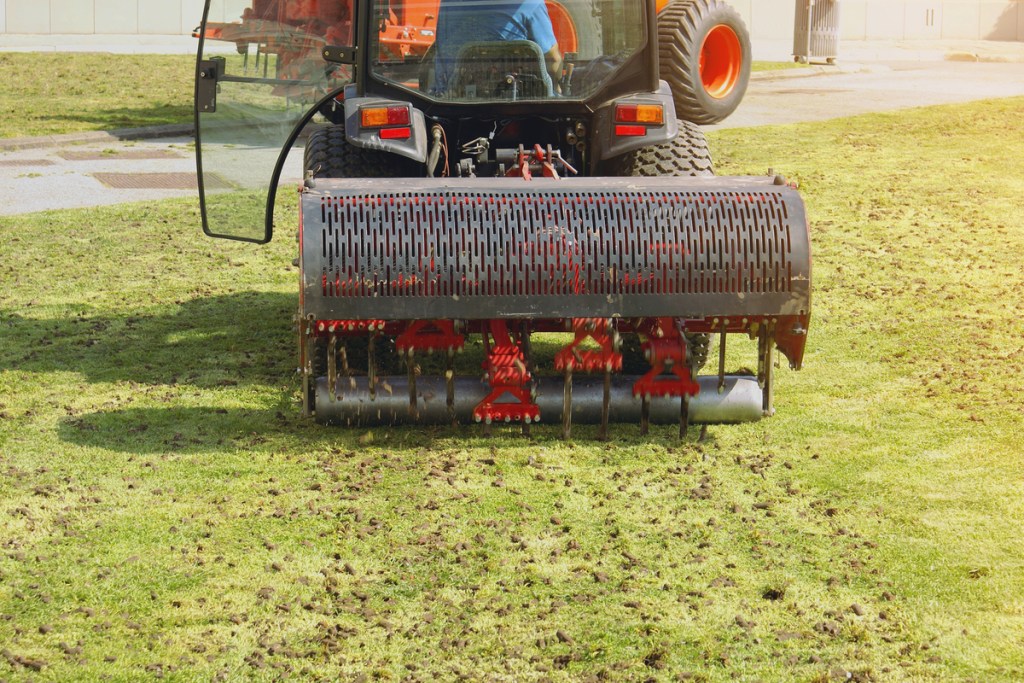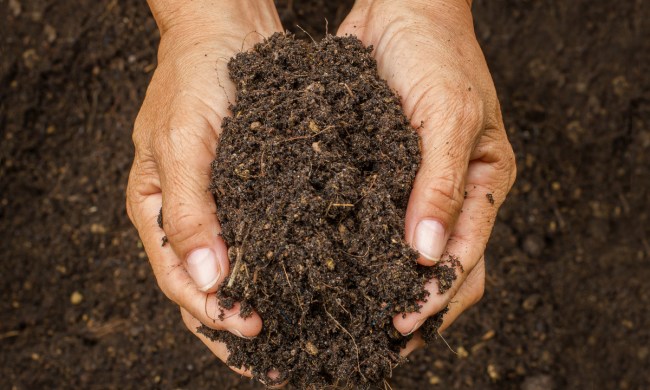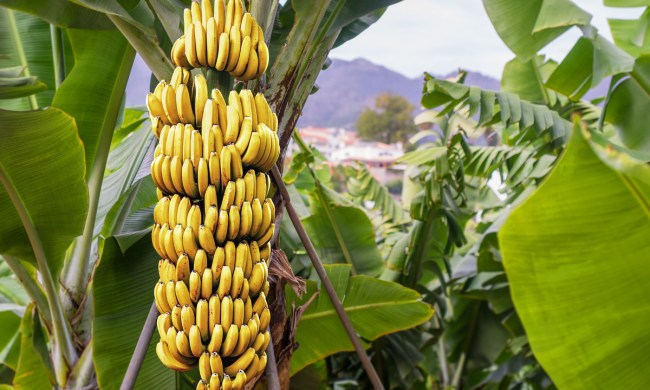There are a seemingly endless number of products, tools, techniques, and tasks related to lawn care. While the basics of lawn care are simple (plant your grass, water your grass, mow your grass), anything beyond that can seem complicated and overwhelming. Take plug aeration, for example. It sounds technical. In this easy guide, we’ll break down plug aeration and cover everything you need to know –– from what it is, how it works, the pros and cons, and any alternatives that exist.
What is plug aeration?
Plug aeration is one method of loosening the soil under your lawn to relieve pressure that’s built up. Soil gradually becomes compact over time. Regular lawn use, such as walking or mowing, contributes to mild soil compaction, but things such as construction, thatch buildup, or parking on your lawn can contribute to severely compacted lawns.
Compacted soil is more difficult for air, water, and nutrients to pass through, which leads to a lawn struggling to get what it needs to thrive. Plug aeration works by removing small cores of soil and leaving cylindrical holes in your lawn, thus relieving the pressure and allowing the remaining soil to spread out.

How effective is plug aeration?
Plug aeration is very effective at relieving soil tension. In fact, plug aeration is so effective that it’s typically used in cases of severe compaction. However, plug aeration is a more involved aeration method. Since it takes more effort and more specific equipment than other methods, it isn’t often used on mild compaction or for regular day-to-day maintenance. Although it can be useful for any lawn, it’s more often reserved for heavily compacted or large lawns.
For the average lawn, aerating once every two to three years is ideal. However, if your soil is clay or clay-rich, or if several soil compacting factors or events occur (such as a big construction project), then your lawn may fare better being aerated once a year. If your lawn has never been aerated, or you aren’t sure when it was last aerated, then it may be best to begin with plug aeration and switch to spike aeration after. The ideal time to aerate your lawn is during the growing season of your particular grass variety (fall for cold weather grasses, spring for warm weather grasses), when the soil is moist but not muddy.
What tools are used for plug aeration?
Plug aerators can take a few different forms, but there are a few basic qualities that all plug aerators have in common. They’re most commonly wheeled devices, usually similar in shape to a lawn mower or seed spreader. There are short, hollow, cylindrical protrusions on the axle. As the aerator is pushed along, the axle turns and the cylinders dig into the ground and remove cores of soil.
Plug aerators are generally expensive, but they can be a great investment if you have a large yard or a lawn that’s likely to be compacted frequently. If you don’t expect to use a plug aerator often, many large hardware stores offer the option of renting them. You can also check with your local landscaping companies, to see if they offer plug aeration as a service.

What other methods of aeration are there?
The other method of aeration is spike aeration. Similar to plug aeration, spike aeration revolves around puncturing the ground. However, as the name implies, it does so with spikes rather than hollow cylinders. This loosens the soil, but doesn’t actually remove any of it, making it a less effective method for severely compacted lawns. Spike aeration is typically used for mildly compacted lawns and general day-to-day maintenance.
Aerating your lawn can help your grass grow and thrive. Of the two types of lawn aeration, plug aeration is more effective. It’s used to aerate heavily compacted lawns, but not typically used for regular yearly aerations. Spike aeration is the more common choice for regular maintenance, but doesn’t relieve as much pressure as plug aeration. No matter which aeration method is right for you, the ideal time to aerate your lawn is the same. If you have cold weather grass, aerate your lawn in the fall, while lawns with warm weather grass should be aerated in the spring. Your soil should be moist but not soggy. Add lawn aeration to your regular maintenance routine, and start with plug aeration.



